Character Traits for Kids – Positive Qualities That Shape Success
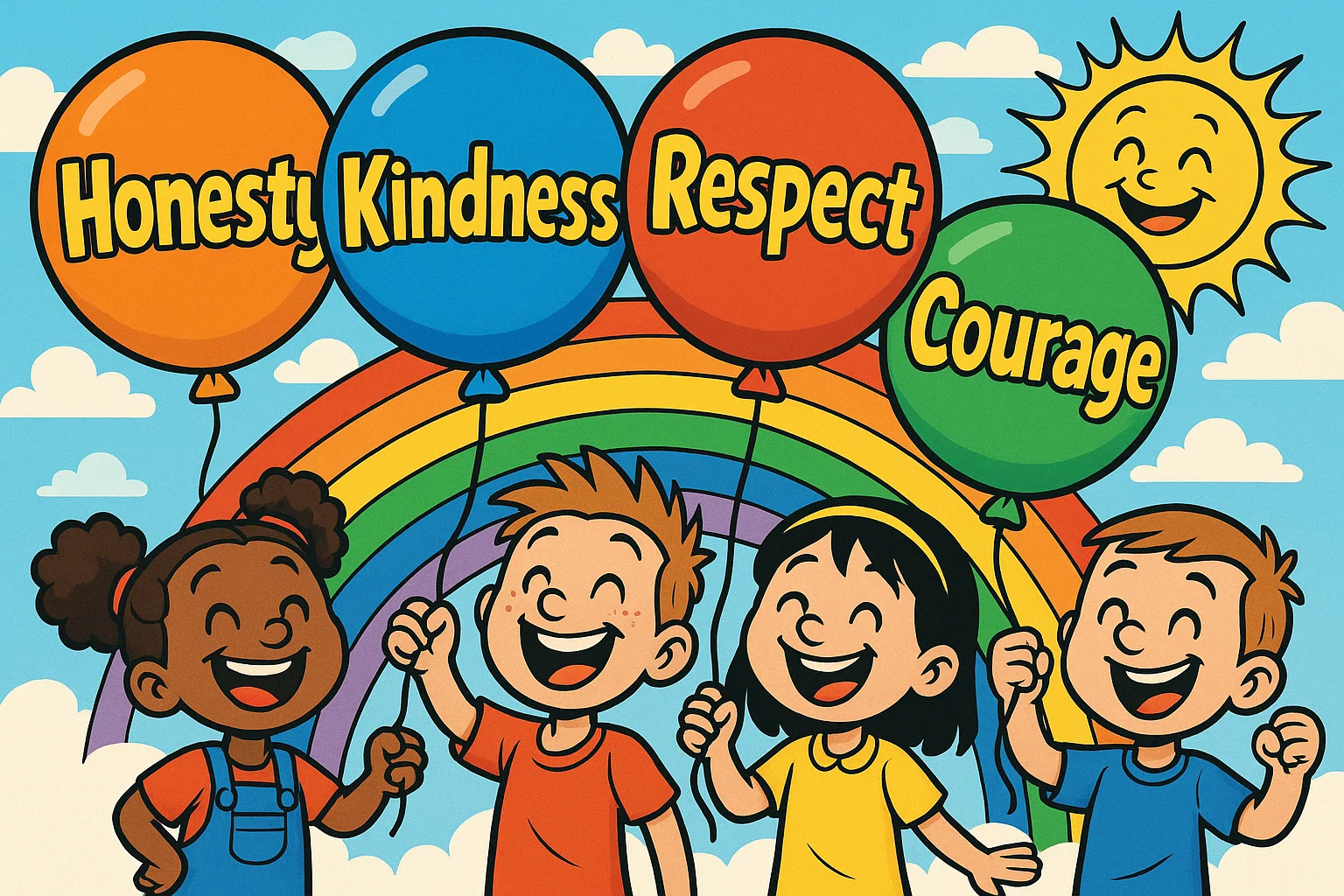
Raising a child is more than supporting growth and academics—it’s about shaping strong character traits. These enduring qualities, like honesty, compassion, and perseverance, predict long-term happiness and success better than IQ or talents. By teaching and modeling positive traits, parents and educators give children the tools to make ethical choices, build resilience, and grow into kind, responsible adults.
What Are Character Traits?
Character traits are the relatively stable, enduring qualities that make up an individual’s ethical and moral fiber. They are the characteristic ways a person thinks, feels, and behaves. In simple words for parents and teachers, a character trait is a fundamental disposition or tendency that influences a child’s actions and choices over time. Think of them as the building blocks of a person’s moral identity.
It is important to distinguish traits from other personal qualities:
| Quality | Description | Examples |
| Character Traits | Moral and ethical foundations, learned and developed over time. | Honesty, Integrity, Compassion, Perseverance |
| Skills | Learned abilities to perform a task. | Riding a bike, solving a math problem, coding |
| Talents | Natural aptitudes or inherent abilities. | Musical ear, artistic skill, athletic ability |
While a child might have a natural talent for drawing, whether they use that talent to create art for others (Kindness) or stop trying after one failure (Perseverance) is dictated by their character traits. Character dictates the use of skills and talents.
Positive vs Negative Character Traits
Character traits are a combination of internal qualities, and they naturally fall into two main groups: positive and negative character traits.
- Positive Traits: These are qualities that lead to constructive behaviors, healthy relationships, and personal growth. They include attributes like kindness, responsibility, and optimism. They help a child thrive and contribute positively to their community.
- Negative Traits: These are qualities that often result in destructive behavior, social friction, and personal stagnation. Examples include selfishness, dishonesty, or extreme impatience.
The goal is not to eliminate all “negative” tendencies—which may sometimes just be a strength overdone (e.g., strong will turning into stubbornness)—but to help kids learn to recognize and manage their negative traits while actively cultivating the positive traits. Children must understand that having a temporary negative feeling or thought is normal, but choosing to act on that thought repeatedly is where a negative characteristic forms. This self-awareness is crucial for character growth.
How Character Traits Differ from Personality
The terms character and personality are often used interchangeably, but they have distinct meanings, especially when teaching kids to learn about themselves:
- Personality Traits: These are the observable, outward patterns of behavior, emotion, and motivation. They are largely inherent and relate to how a child interacts with the world. Examples are Introverted, Extroverted, Energetic, Calm, Witty, or Quiet.
- Character Traits: These are the internal, moral qualities that define what a child chooses to do. They relate to a child’s values, ethical choices, and moral fortitude. Examples are Honesty, Empathy, or Compassion.
Example for a child to understand:
A child might have a Quiet personality trait (they don’t like to speak up). However, when they see another child being treated unfairly, their Courage character trait may compel them to speak up and defend them. Their personality is Quiet, but their character is Courageous. We want to help them become people of strong character, regardless of their personality type.
Character Traits in Daily Life
Character traits are not abstract concepts; they are on display every single day. Helping a child recognize character traits in their actions is the first step in development.
At Home:
- A child cleaning up a spill without being asked demonstrates Responsibility.
- Two siblings sharing a favorite toy without fighting shows Fairness and Kindness.
- A child who admits to breaking a vase, even though they fear consequences, is showing Honesty and Integrity.
At School:
- A student who keeps studying after failing a test the first time exhibits Perseverance.
- A child who waits their turn to speak in class or while playing a game is showing Patience and Respect.
- A classmate who notices another child looking sad and asks if they are okay demonstrates Empathy.
At Play (Team Sports, Games):
- A player who cheers for an opponent’s good play shows Sportsmanship.
- A child who takes the initiative to resolve a conflict among friends is displaying Leadership and Fairness.
- Participating in sports is a great venue for learning about teamwork, which is rooted in cooperation and respect.
Why Character Traits Matter for Kids
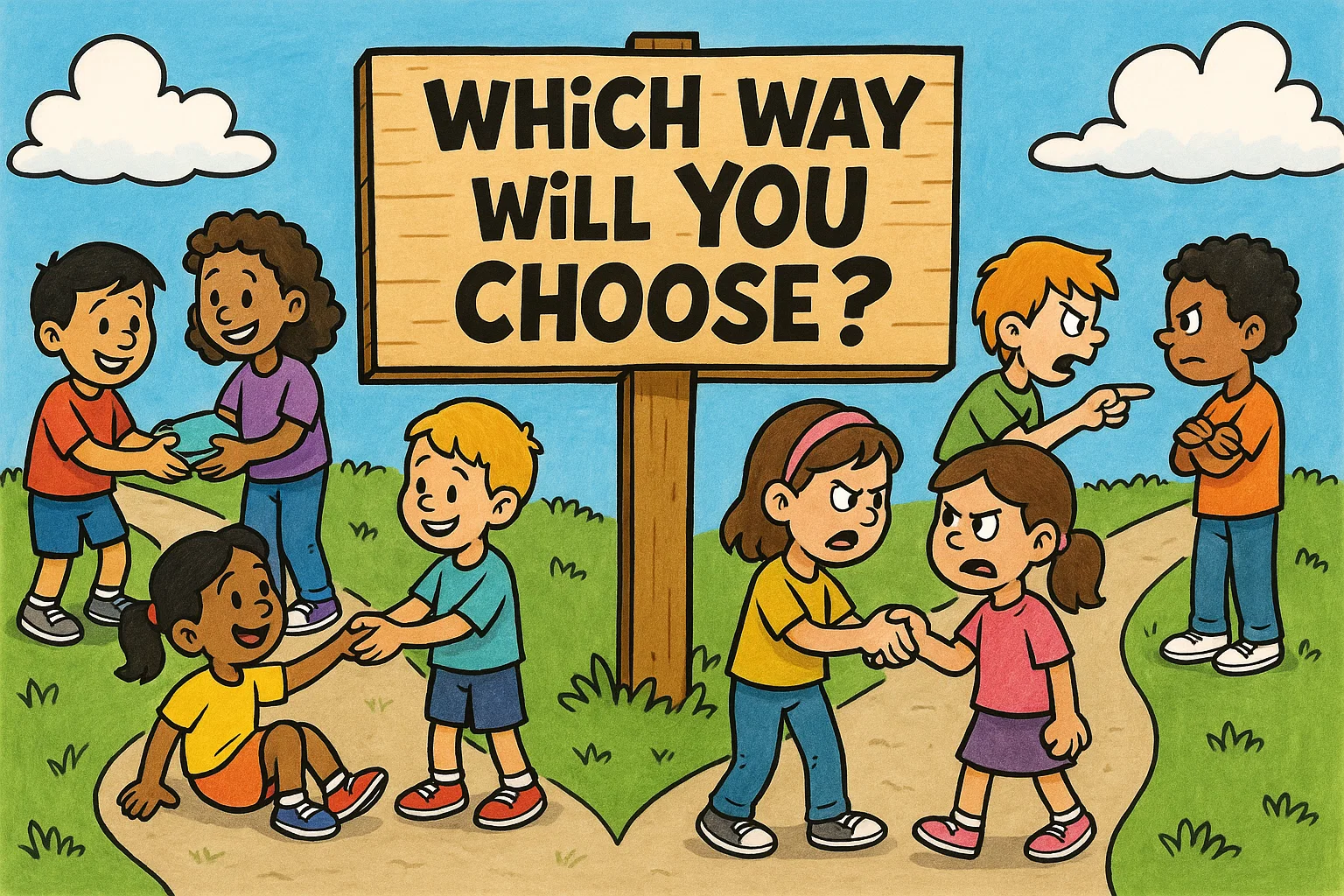
The investment parents and educators make into cultivating good character traits is one of the most worthwhile for a child’s future. Important character traits for kids are the foundation upon which academic success, healthy relationships, and mental well-being are built. They are the internal resources a child draws upon to meet the challenges of life.
Building Confidence and Self-Esteem
A strong moral compass inherently leads to higher self-worth. When a child consistently acts in alignment with positive traits, they develop a positive self-image. For example, a child who shows courage to face a new challenge, even if they fail, proves to themselves that they can handle difficult situations. This resilience is the bedrock of genuine self-confidence.
Traits that build confidence:
- Courage: Allows the child to step outside of their comfort zone.
- Responsibility: Gives them a sense of competence and control over their world.
- Integrity: Creates internal harmony, knowing their actions match their values.
Dr. Thomas Lickona, a leading expert in character education, often states that character is “moral strength,” and that knowing you are doing the right thing, even when it’s hard, is the deepest source of self-respect. We want to help them become strong individuals.
Preparing for School and Future
Academic and career success depends not just on intelligence, but on a host of essential character traits.
| Trait | Impact on School and Future Success |
| Perseverance | Enables sustained effort and bouncing back from setbacks (grit). |
| Discipline | Leads to good study habits, time management, and focus. |
| Curiosity | Drives a love for learning and critical thinking. |
| Responsibility | Translates to meeting deadlines and being accountable in the workplace. |
| Optimism | Promotes a positive attitude that fuels problem-solving and innovation. |
These essential character traits for kids directly shape their work ethic, their capacity for teamwork, and their problem-solving skills, making them ready to face the demands of higher education and the modern professional world.
Forming Healthy Friendships
Social intelligence is deeply tied to character. A child’s character traits, especially their ability to relate to others, determine the quality and longevity of their friendships. Traits help children understand social dynamics and the importance of reciprocity.
Key Social Traits:
- Kindness and Compassion: Attracts friends and ensures the child is a supportive, reliable person to others. Help your child be the friend others can count on.
- Respect: Teaches a child to value values and beliefs different from their own, preventing conflict and promoting tolerance.
- Empathy: The ability to put oneself in another’s shoes is the single most important trait for healthy conflict resolution and deep connection. The best way to teach empathy is through modeling and discussion.
By developing these important character traits, children don’t just find friends; they become good friends—the kind of people others trust and value.
Essential Positive Character Traits for Kids
While a comprehensive list of character traits is extensive, focusing on a core set of positive character traits provides a manageable and effective framework for parents and educators. These are the qualities that children kids need most to thrive.
Honesty – telling the truth and building trust
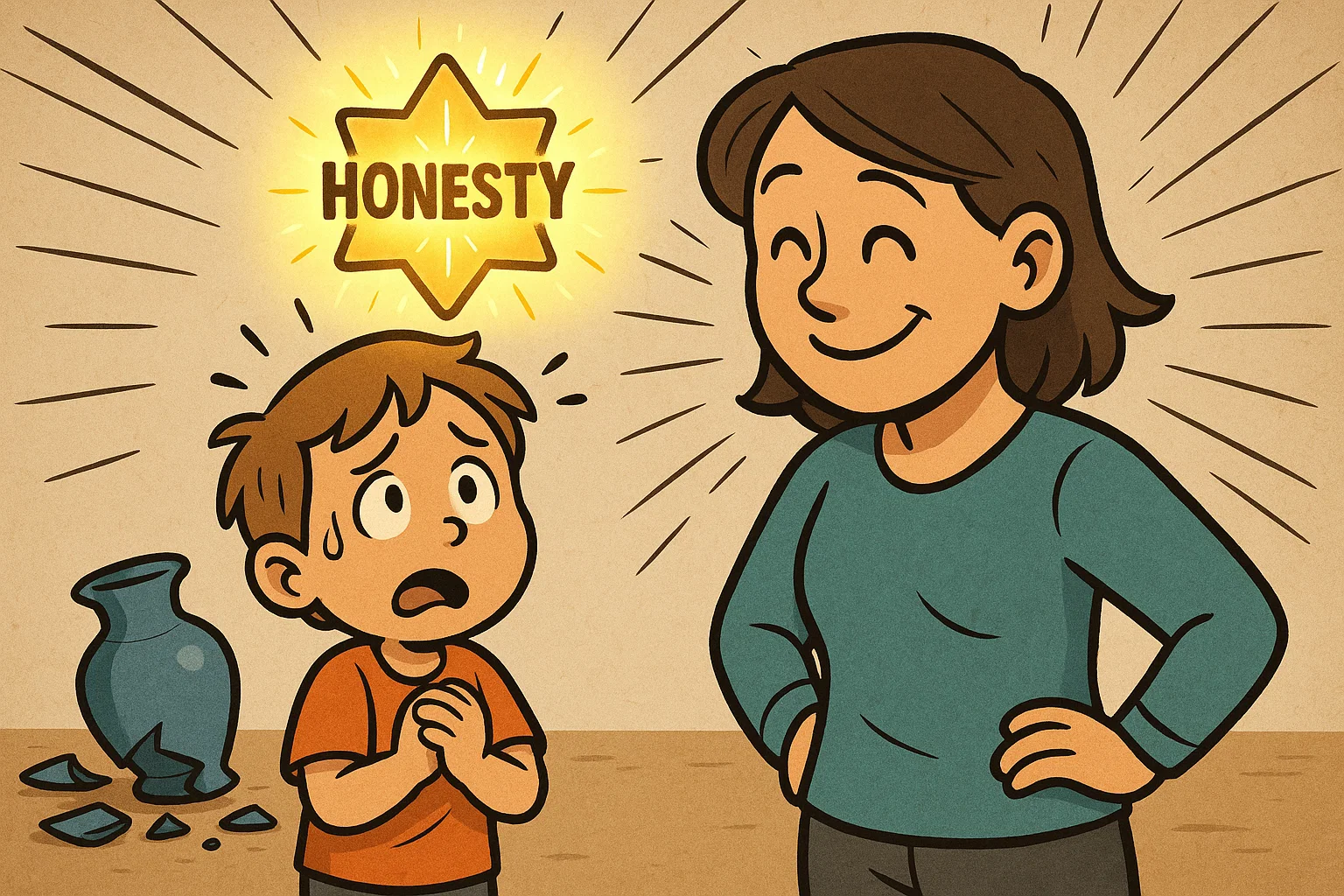
Definition: Being truthful in word and deed. It means acknowledging the facts, even when inconvenient or difficult.
How to Instill: Instill honesty by always modeling it, no matter how small the situation. Praise them when they tell the truth about a mistake.
Simple Example: A child tells their parent they didn’t finish their homework, even though they know they might lose screen time. This builds trust.
Kindness – helping and caring for others
Definition: The quality of being friendly, generous, and considerate. It is the active choice to be helpful and supportive.
How to Instill: Encourage kids to think about how their actions affect others. Ask, “How did that make your friend feel?” Encourage them to participate in small acts of service.
Simple Example: Sharing a snack with a friend who forgot theirs, or holding the door open for an adult.
Responsibility – owning actions and tasks
Definition: Being accountable for one’s own actions and obligations. It involves reliability and follow-through.
How to Instill: Give children age-appropriate chores and tasks, and let them experience the natural consequences of not completing them (without harsh criticism). This is a great way to teach ownership.
Simple Example: Remembering to feed the pet every day or putting away their toys after playing.
Perseverance – not giving up when things get hard
Definition: Persistence in doing something despite difficulty or delay in achieving success. It is the essence of “grit.”
How to Instill: Celebrate effort over outcome. When a child struggles, encourage them to take a break and try a different approach. Discuss stories of successful people who faced failure.
Simple Example: Continuing to practice a challenging piece on the piano, even after making many mistakes.
Respect – valuing people, rules, and surroundings
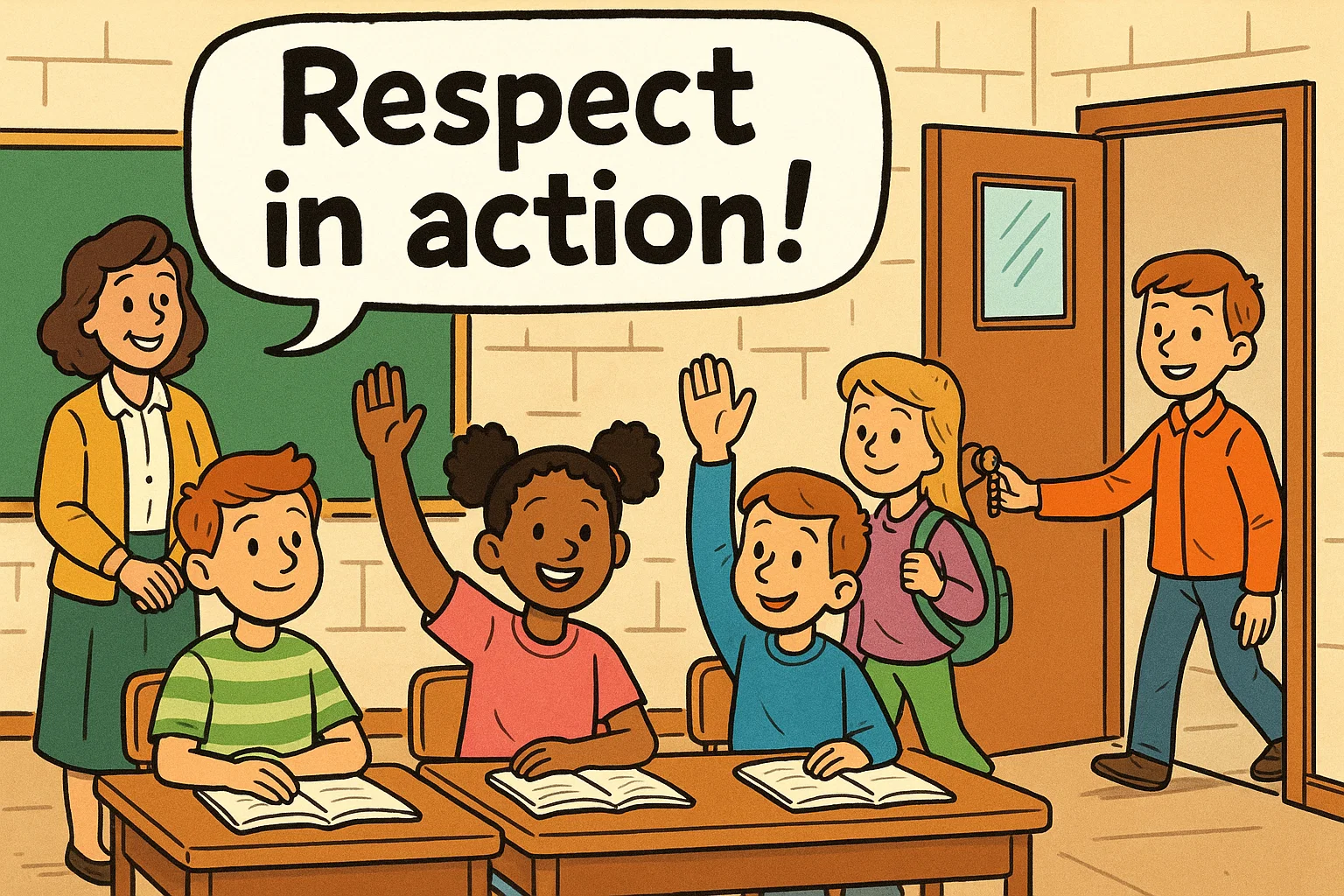
Definition: Holding people, rules, and property in high regard; treating them with courtesy and consideration.
How to Instill: Teach children to use manners (treat others as they wish to be treated) and explain why rules exist (they keep people safe and society orderly).
Simple Example: Listening quietly while another person is speaking or taking good care of borrowed books.
Self-Confidence – believing in personal abilities
Definition: A feeling of trust in one’s abilities, qualities, and judgment.
How to Instill: Focus on strengths and weaknesses as areas for growth, not judgment. Give them opportunities to succeed by assigning tasks they can do, and then celebrate their achievement.
Simple Example: Volunteering an answer in class even when unsure, or trying out for a team.
Empathy – understanding others’ feelings
Definition: The ability to understand and share the feelings of another.
How to Instill: Read books that explore different emotions. Ask open-ended questions like, ‘Why do you think the character felt that way?’
Simple Example: Comforting a friend who is crying because they lost a game, even if the child didn’t win either.
Courage – facing fears and challenges
Definition: The mental or moral strength to venture, persist in the face of danger, difficulty, or pain.
How to Instill: Acknowledge and validate their fears, but gently encourage them to try the feared activity anyway. Define courage as “acting even when scared.”
Simple Example: Going to the dentist, speaking up against bullying, or trying a new food.
Creativity – thinking of new ideas and solutions
Definition: The use of imagination or original ideas to create something.
How to Instill: Provide unstructured play time and open-ended materials (like blocks or art supplies). Encourage “what-if” thinking and brainstorming.
Simple Example: Building a fort in a unique way to express imagination or inventing a new game with friends.
Patience – waiting calmly and managing frustration
Definition: The capacity to accept or tolerate delay, trouble, or suffering without getting angry or upset.
How to Instill: Engage in activities that require waiting (e.g., baking, gardening). Teach simple calming techniques like deep breaths.
Simple Example: Waiting their turn in a long line without complaining, or waiting for a seed to sprout.
Compassion – showing care and support
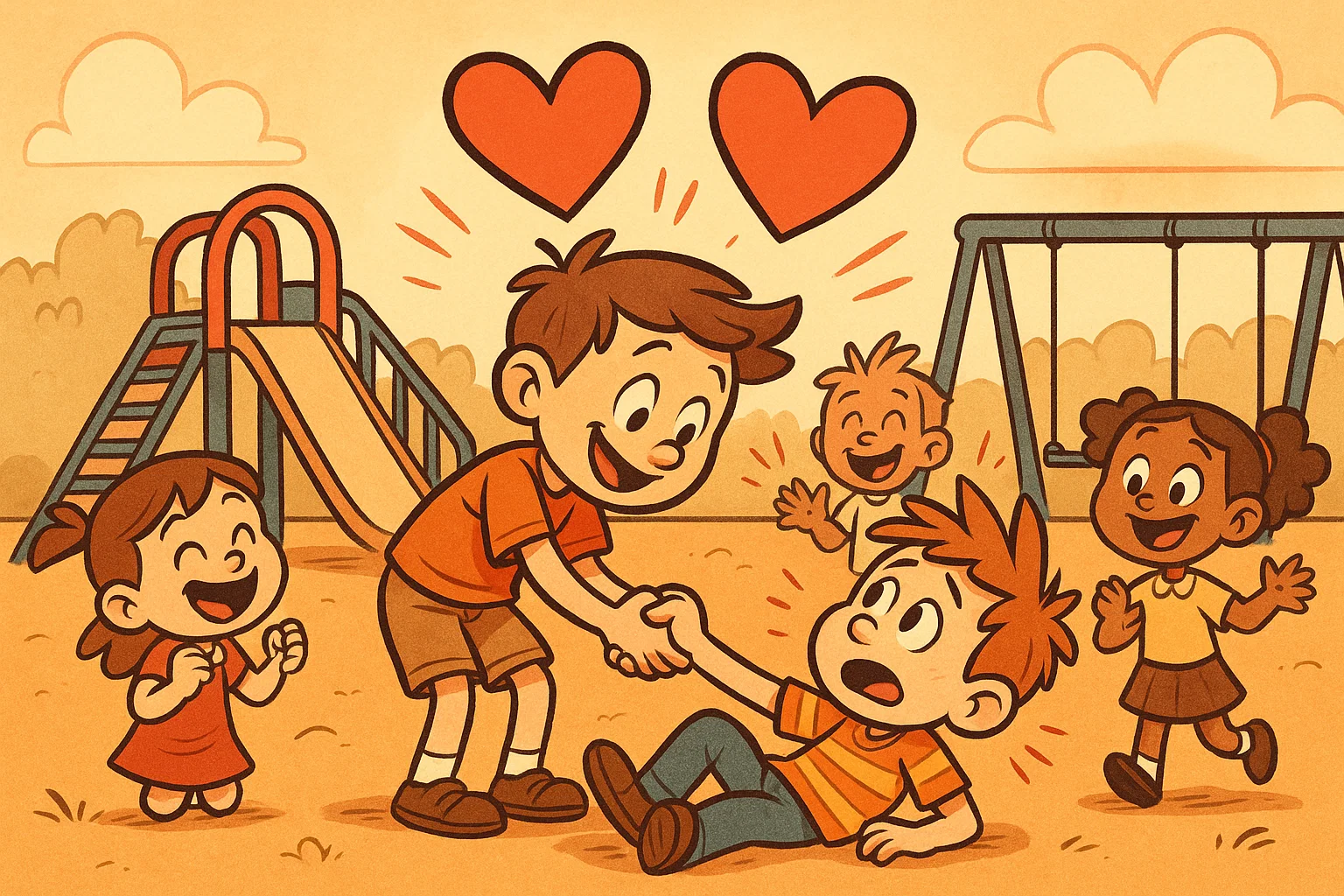
Definition: Sympathetic pity and concern for the sufferings or misfortunes of others. It’s empathy in action.
How to Instill: Model acts of service or charity. Discuss global or community needs in an age-appropriate way to teach them about the wider world.
Simple Example: Making a card for a sick relative or donating old toys to children in need.
Curiosity – wanting to learn and explore
Definition: A strong desire to know or learn something.
How to Instill: Answer “Why?” questions enthusiastically. Visit museums, libraries, and natural spaces. Encourage them to explore topics that interest them deeply.
Simple Example: Reading an extra book about a topic learned in class or asking deep questions about how something works.
Discipline – staying focused on goals
Definition: Self-control and commitment to a goal; the ability to follow rules and routines that build consistency. More positively, it’s self-control and commitment to a goal.
How to Instill: Help children set small, achievable goals (e.g., practicing piano for 15 minutes). Use visual timers and routines to build structure.
Simple Example: Sticking to a morning routine or saving allowance money for a specific item.
Optimism – keeping a positive outlook
Definition: Hopefulness and confidence about the future or the success of something. Seeing the positive side of difficult situations.
How to Instill: Model positive self-talk. Help children reframe setbacks: instead of “I can’t do it,” teach them “I can’t do it yet.” This is a key way to instill positivity.
Simple Example: Feeling excited about trying again after a failure, or finding the silver lining in a rainy day.
Integrity – staying true to promises and values
Definition: The quality of being honest and having strong moral principles. Doing the right thing even when no one is watching.
How to Instill: Be clear about family values and beliefs. Hold children accountable for their promises and teach them the importance of keeping their word.
Simple Example: Returning a lost item even if they could have kept it, or confessing to a mistake that wasn’t noticed.
Negative Character Traits Kids Should Avoid
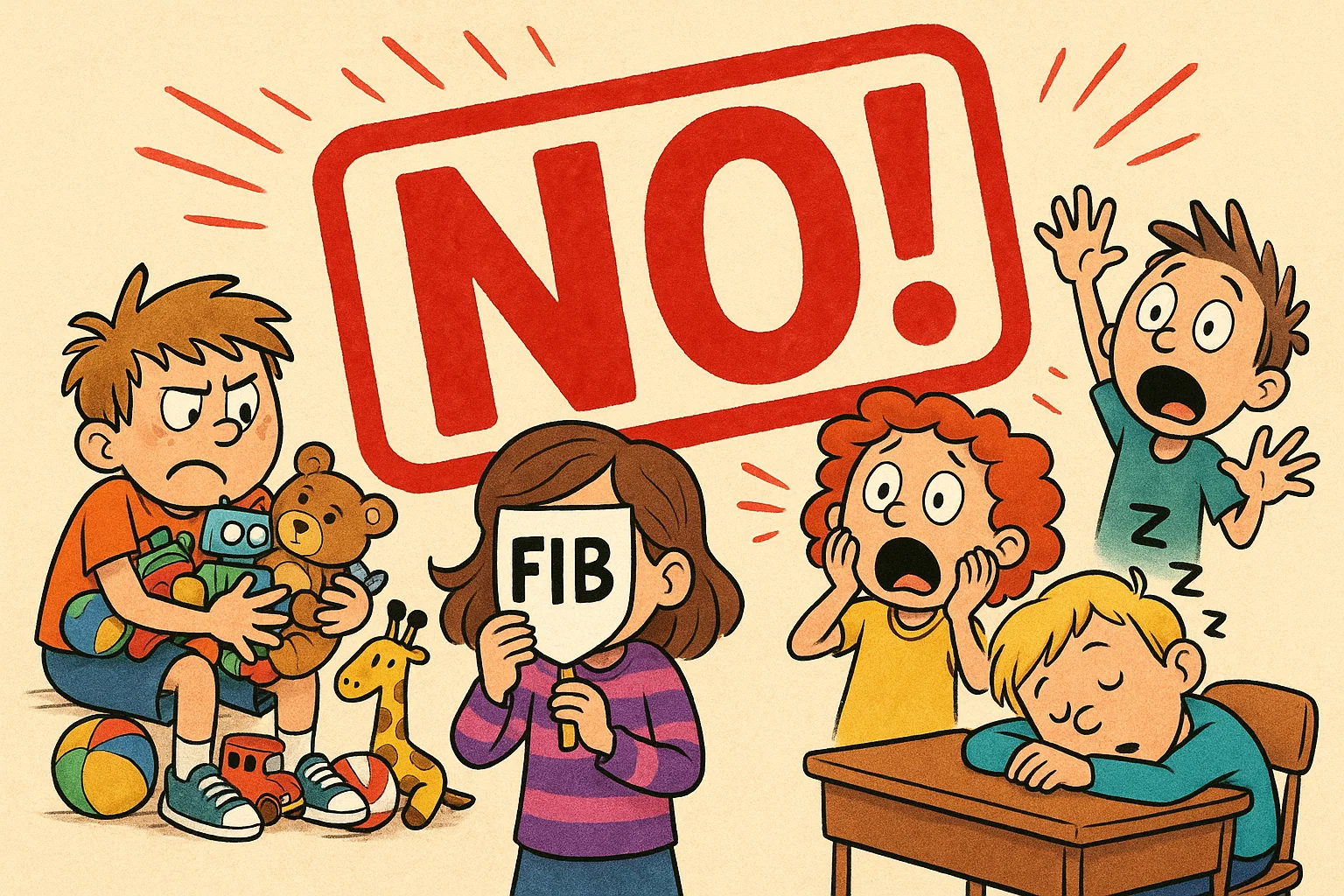
While the focus should always be on reinforcing the positive side, it is equally important to discuss negative characteristics with children so they can help kids identify and manage them. Understanding the positive or negative impact of their choices is fundamental. These negative traits are often behavioral patterns that can hinder personal growth and strain relationships.
| Negative Trait | Impact on Behavior and Learning |
| Selfishness | Inability to share or consider others; harms friendships and teamwork. |
| Laziness | Lack of motivation to put in effort; prevents learning and skill development. |
| Dishonesty | Lying, cheating, or stealing; erodes trust and social capital. |
| Disrespect | Ignoring rules, interrupting, or being rude; creates conflict with authority and peers. |
| Impatience | Inability to wait or manage frustration; leads to rash decisions and anger. |
| Overconfidence | Excessive belief in one’s abilities without merit; can lead to carelessness and lack of preparation. |
The key is to discuss these not as labels (“You are lazy”), but as behaviors (“That was a lazy choice”). This allows children to realize they have the power to choose a different, right traits path. Children should learn that acknowledging both strengths and weaknesses is the start of true character growth.
How to Teach Character Traits to Kids
The most effective way to teach important character traits for kids is through consistent, intentional, and integrated strategies that span every part of a child’s life. This is not a one-time lesson but an ongoing process of guidance.
Lead by Example
Children are innate observers and imitators. They learn more from what you do than what you say. This is why modeling is the single most powerful tool for character education.
- Model Honesty: Apologize to your child when you make a mistake (“I was wrong to yell, I lost my patience, and I apologize.”).
- Model Compassion: Help a neighbor or donate clothes. Let your child see you treat others with respect, even in frustrating situations (e.g., being polite to a difficult customer service agent).
- Model Perseverance: Talk out loud when you are struggling with a difficult task, saying things like, “Wow, this is hard, but I’m going to stick with it!”
Use Stories and Books
Stories are powerful vehicles for character education because they allow children to safely explore complex ethical situations. When you read a book, the characters become role models.
- For Empathy: Choose books where characters struggle with big emotions. Ask, “What traits or feelings do you think the main character is showing?”
- For Courage: Read myths, folktales, or stories of historical figures who faced fears.
- After reading: Use the story to discuss choices. “What choice did the character make? Was it a positive or negative one? What would you have done?”
Practice with Role-Playing Games
Role-playing is an active, engaging way to teach empathy, respect, and conflict resolution. It allows children to safely practice responses.
- Scenario 1 (Respect): Pretend your child is a new student who is nervous. Have them role-play how they would want to be greeted by another student. Then, switch roles.
- Scenario 2 (Conflict Resolution): Role-play an argument over a toy. Have the children practice using “I feel…” statements instead of blaming.
- Scenario 3 (Courage): Role-play asking a teacher a question when they feel shy. This helps them build the courage to face their anxieties.
Praise and Reinforce Positive Behavior
Specific, descriptive praise is essential for help your child internalize their good character traits. Avoid generic praise like “Good job.”
| Less Effective Praise | More Effective Praise | Trait Reinforced |
| “You’re a good girl.” | “I noticed you kept trying on that puzzle even though it was frustrating. That is amazing perseverance!” | Perseverance |
| “That was nice.” | “Thank you for sharing your favorite toy with your sister. That showed great kindness.” | Kindness |
| “You were honest.” | “It took courage and integrity to tell me the truth about what happened, even though you knew you might get in trouble. I am proud of your honesty.” | Integrity, Courage, Honesty |
This specific feedback helps your child understand exactly which behaviors you value, making them more likely to repeat it.
Discuss Everyday Situations
The best teaching moments are spontaneous and relevant. Use daily experiences to discuss values.
- After a loss in a game: Talk about sportsmanship and optimism. “It’s tough to lose, but how can we still be respectful of the winners and excited for the next game?”
- During news/current events: Discuss acts of compassion or injustice you see in the world. Ask, “What kind of character trait do you think that person showed?” This helps children understand the real-world impact of choices.
Activities and Resources for Teaching Character Traits
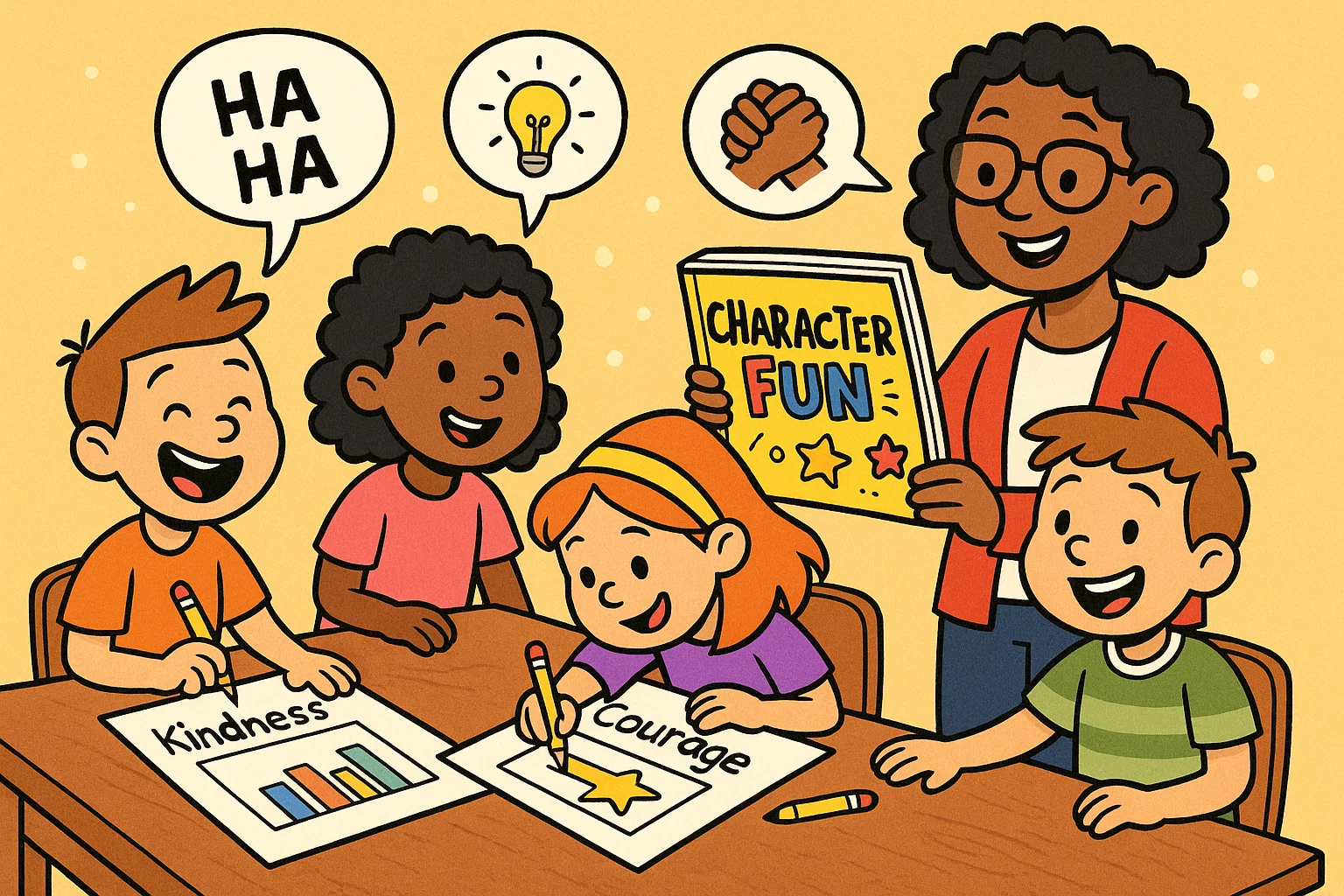
Providing concrete tools and activities helps children visualize and practice character traits. These resources are ideal for identifying character traits and making the concepts tangible.
Worksheets and Word Lists
- Character Trait Worksheets: Simple printables that list a trait (e.g., Responsibility) and ask kids to write or draw three ways they can show that trait today. A simple fill-in-the-blank or matching activity can help children grasp the meaning.
- “I Can Be…” Statements: Have kids draw pictures of themselves performing an action that reflects a trait, then write an “I can be…” statement beneath it (e.g., “I can be patient by waiting for my turn”).
- Handy Word Mat: A visual chart or handy word mat of list of positive and negative traits is a great reference for discussions.
Character Trait Charts
Create a large, visible chart at home or in the classroom to track character growth.
- “Trait of the Week”: Focus on one essential character trait (e.g., Empathy). Define it, discuss it, and look for examples throughout the week.
- Sticker/Tally Chart: When a child demonstrates the trait of the week, put a sticker or a tally mark next to their name. The goal is internal motivation, not external reward, so focus on the behavior itself.
Group Games for Teamwork and Respect
Cooperative games are excellent for practicing social personality traits.
- The Human Knot: A classic teamwork game where children stand in a circle, hold hands with two non-adjacent people, and must untangle themselves without letting go. This requires patience, communication, and perseverance.
- The Silent Line: Ask children to line up in order of their birth month, but they cannot speak—only use gestures. This practices respect for non-verbal communication and collective problem-solving.
- “You Can Help”: Give kids can help scenarios (e.g., “The classroom is messy,” “The team lost the game”). Have them brainstorm solutions that involve cooperation and a positive attitude.
Journaling and Reflection Activities
For older children (8+), reflection is a powerful tool for self-assessment and growth.
- Daily Character Check-in: Prompt kids to write or draw about one time they showed a positive trait and one time they could have made a better choice.
- Strengths & Weaknesses T-Chart: Have children create a T-chart listing their perceived strengths and weaknesses in character. Encourage them to set one small goal for improving a “weakness” trait (e.g., “Be more patient by taking three deep breaths before reacting”).
Conclusion – Building Strong Character Traits for Kids
The task of developing positive character traits for kids is the most profound and lasting legacy a parent or educator can provide. Character is not something a child is simply born with; it is deliberately built over time through the consistent teaching, modeling, and encouragement of traits like perseverance, optimism, compassion, and integrity. By focusing on these positive character traits, we equip them with the tools they need not just to pass a test or get a job, but to live a life of meaning, ethical decision-making, and deep connection. Let us commit to nurture these qualities, helping our children understand that their character—the core of who they are—will be their most reliable guide on the path to becoming successful, kind, and resilient human beings.
Frequently Asked Questions on Character Traits for Kids
What stories are best for teaching traits?
The best stories for teaching character traits are those that feature clear moral dilemmas and characters whose choices have noticeable consequences. Look for classics like Aesop’s Fables (for honesty, laziness), traditional folktales from around the world (for courage, resourcefulness), and modern books that focus on social-emotional learning. Books where the main character makes a mistake and then shows integrity by correcting it are particularly effective, as they model growth.
Can friends influence my child’s traits?
Yes, absolutely. Peers are one of the most powerful influences on a child’s personality traits and developing character. Children naturally seek to belong, and they often adopt the behaviors and values of their close social group. This is why it’s vital to help your kids choose friends who exhibit good character traits. Encourage your child to be a positive influence on others, too, teaching them that they can choose the right path regardless of peer pressure. Discussing situations where friends made good or poor choices can be a great way to help kids understand social influence.
How do I correct negative traits without punishment?
The goal is always to guide behavior, not punish the child. When correcting negative characteristics like dishonesty or selfishness, focus on natural or logical consequences rather than arbitrary punishment.
- Acknowledge the Feeling: “I know you were frustrated when your brother took the block, but pushing him was a wrong choice.”
- Focus on the Behavior: “We need to fix what was broken/hurt.”
- Use Logical Consequences: If the child is rude (disrespect), the consequence might be that the person they spoke to doesn’t want to play with them for a while (natural consequence). If they lied (dishonesty), the logical consequence is that trust must be re-earned through consistent truth-telling.
- Re-Teach the Positive Trait: After correcting, practice the positive trait using role-playing or discussion.
How can technology help with character education?
Technology can be an excellent tool for character education if used mindfully.
- Digital Storytelling: Educational apps or videos that model positive traits and allow children to make ethical choices within the game (interactive narratives).
- Creation Tools: Kids draw and use creation tools to illustrate character trait charts or make short films about kindness or perseverance.
- Online Community Service: Older children can use technology to research charities, organize virtual drives, or advocate for causes they believe in, thus practicing compassion and responsibility on a larger scale. The key is to monitor usage and ensure the technology promotes ethical and kind behavior.
